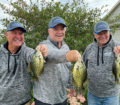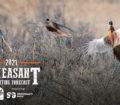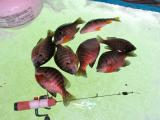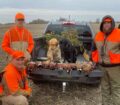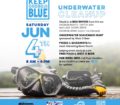By Bob Jensen
Fishing the Midwest Fishing Team
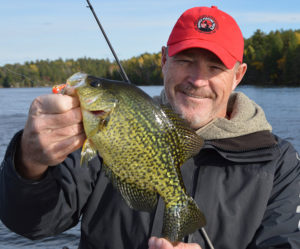 From as soon as weedbeds are established in early summer and well into the autumn months, the deep weedline is a very good place to look for hungry predator fish. They’ll be there looking for something to eat, and if they see your bait, the chances are good that they’ll eat it. Following are some ideas for catching fish on the weedline right now and for the next few weeks.
From as soon as weedbeds are established in early summer and well into the autumn months, the deep weedline is a very good place to look for hungry predator fish. They’ll be there looking for something to eat, and if they see your bait, the chances are good that they’ll eat it. Following are some ideas for catching fish on the weedline right now and for the next few weeks.
Across much of the Midwest, the vegetation that forms the weedbeds that the deep weedline is part of consist mostly of cabbage weed. There will be some places where coontail is present or even dominant, and some other types of vegetation may be mixed in also, but cabbage weeds are usually most prominent. Depending on water clarity, the deep weedline can be in seven feet of water in lakes that have less clarity to eighteen or even twenty feet of water in lakes that have more clarity. Due to clearer water across much of the Midwest, the deep weedline can be found in deeper water in more places than in the past.
When you find a spot where the weedline juts out a bit and forms a point, you’ve found a place that will often hold a concentration of fish. They could be walleyes or largemouth bass, but it’s not unusual to find a musky or northern pike roaming around also. You’ll find fish tightly grouped on and in the points and the pockets, but you’ll also find individual fish scattered along the edges.
A casting presentation will usually be best. Casting allows an angler to keep the bait along the edge where the fish are. Keep moving and casting until you catch a fish, then slow down and work the area thoroughly.
Lots of techniques will take fish along the weedline in the fall, but it works really well to start by throwing a crankbait. There are usually at least two anglers in the boat when we go fishing, and often there will be three of us. Everyone should start with a different shape and color of crankbait. Someone should be casting a longer, thinner crankbait, something like a Lucky Shad. This shape is most appealing to walleyes, but bass or pike will also readily hit it.
Another angler should have a shorter, fatter crankbait on the end of their line. A Pro Model XD crankbait fits this description. It’s designed for largemouth bass, but it has been the reason a lot of walleyes have been introduced to a landing net.
The usual idea when it comes to lure color is to go with natural appearing baits in clear water and brighter baits in stained water, but that’s only a starting point. There are times when the fish want a particular color, so keep trying different colors until the fish reveal their color preference for that day or that time-of-day.
If you’ve taken a few fish off a particular spot on the crankbait but they slow down or quit, before you move on, work a jig/plastic or jig/minnow through the area that produced the fish. That will usually get a couple more to bite.
If it’s a calm late afternoon or early evening when you’re on the water, keep an eye out for fish dimpling the surface near the weedline. If you see some activity, move very quietly toward the dimpling and throw a sixteenth ounce jig tipped with plastic or a minnow. Swim it slowly through the area being dimpled and you’ll probably catch some crappies. The dimples are created by crappies sucking bugs off the surface.
Since the crappies are feeding on the surface, you’ll want to swim your bait just a couple of feet down. It might work even better to fish the jig below a slip-bobber. I’ve done this several times in the past with good success.
The weedline can provide lots of fall action. Make sure you’re fishing healthy green weeds and keep moving until you find the fish. Catch a few, then when the action slows move farther along the weedline. You’ll get bit, you’ll have a good time, and that’s why most of go fishing.

